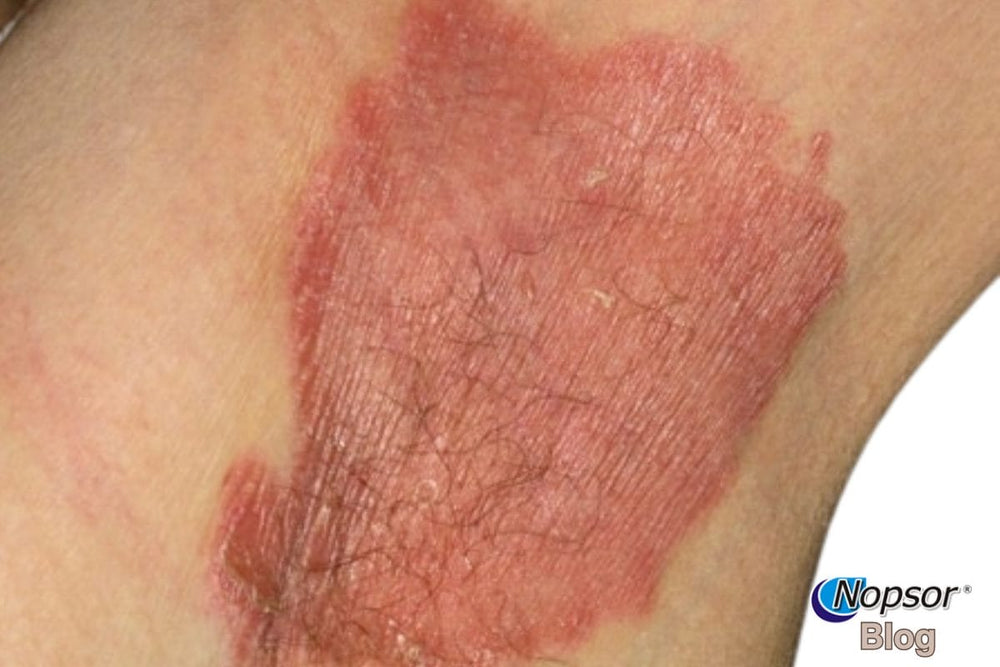Inverse Psoriasis: Causes, Symptoms, and Best Treatments

Imagine feeling a constant, burning irritation in the folds of your skin—under your arms, beneath your breasts, or in your groin. No visible scales like other types of psoriasis, just raw, red, painful patches that make every movement uncomfortable. This is inverse psoriasis, a lesser known yet deeply frustrating form of the condition that thrives in skin folds where moisture and friction make it even worse.
If you've struggled with psoriasis in these sensitive areas, you're not alone. The good news? There are effective treatments and ways to manage it. Let’s break down what causes inverse psoriasis, how to recognize it, and the best ways to find relief.
What is Inverse Psoriasis?
Unlike plaque psoriasis, which appears as thick, scaly patches, inverse psoriasis presents as smooth, shiny, red lesions found in skin folds. Because of its location, it is often aggravated by sweat, friction, and fungal infections.
Common Affected Areas:
-
Under the breasts
-
Armpits
-
Groin
-
Around the genitals
-
Behind the knees
Symptoms of Inverse Psoriasis
-
Bright red, inflamed patches of skin
-
Smooth, shiny appearance (no scales)
-
Pain or discomfort due to friction
-
Increased sensitivity and irritation
Causes and Triggers
Inverse psoriasis is an autoimmune condition, meaning the immune system mistakenly attacks healthy skin cells, causing rapid turnover and inflammation. Common triggers include:
-
Heat & Moisture – Sweat buildup worsens irritation.
-
Friction – Skin rubbing in folds leads to discomfort.
-
Fungal or Bacterial Infections – These infections thrive in moist areas and can exacerbate symptoms.
-
Obesity – Excess skin folds can contribute to severity.
-
Hormonal Changes – Can influence flare-ups.
-
Stress – Known to trigger psoriasis flares.
Best Treatments for Inverse Psoriasis
1. Topical Treatments
-
Low-Potency Steroids – Reduce inflammation but must be used cautiously to prevent skin thinning.
-
Vitamin D Analogs – Help slow down skin cell turnover.
-
Calcineurin Inhibitors (Tacrolimus, Pimecrolimus) – Effective for sensitive areas without the risk of skin thinning.
-
Antifungal or Antibacterial Creams – If infections are present, these treatments help prevent further irritation.
-
Nopsor Topical Treatment – A natural, steroid-free option designed for long-term use. It combines coal tar, salicylic acid, and proprietary herbal ingredients to soothe inflammation and reduce scaling. Safe for sensitive skin areas affected by inverse psoriasis.
2. Systemic Treatments (For Severe Cases)
-
Biologics – Target the immune system to prevent inflammation (e.g., adalimumab, etanercept, secukinumab).
-
Oral Medications – Methotrexate or cyclosporine may be prescribed for widespread cases.
3. Lifestyle Adjustments
-
Keep Affected Areas Dry – Use absorbent powders or soft clothing to reduce moisture buildup.
-
Choose Loose-Fitting Clothing – Helps minimize friction.
-
Manage Stress – Stress management techniques like meditation and yoga can help reduce flare-ups.
-
Maintain a Healthy Weight – Reducing excess skin folds can alleviate symptoms.
Inverse Psoriasis vs. Other Psoriasis Types
Inverse psoriasis is often confused with fungal infections, eczema, or intertrigo due to its appearance in skin folds. However, it lacks the scaling of plaque psoriasis and responds differently to treatments.
When to See a Doctor
If symptoms persist despite home treatments or if there are signs of infection (swelling, pus, or extreme discomfort), always consult with your dermatologist. Work closely with them to explore treatment options and give them feedback on how well the treatments are working—or if adjustments are needed.
Final Thoughts
Inverse psoriasis requires a combination of medicated treatments and lifestyle adjustments for effective management. By understanding triggers and taking proactive steps, those affected can minimize flare-ups and discomfort.
References:
-
Cleveland Clinic:
- Provides an overview of inverse psoriasis, including symptoms, causes, and treatment options.
- https://my.clevelandclinic.org/health/diseases/22852-inverse-psoriasis
-
National Psoriasis Foundation:
- Offers comprehensive information on inverse psoriasis, its triggers, and available treatments.
- https://www.psoriasis.org/inverse-psoriasis
-
Mayo Clinic:
- Discusses the symptoms and causes of inverse psoriasis, along with general psoriasis information.
- https://www.mayoclinic.org/diseases-conditions/psoriasis/symptoms-causes/syc-20355840
-
WebMD:
- Provides insights into the symptoms and treatment options for inverse psoriasis.
- https://www.webmd.com/skin-problems-and-treatments/psoriasis/inverse-psoriasis


Leave a comment
Also in Types of Psoriasis
Erythrodermic Psoriasis: Why It’s a Medical Emergency
March 05, 2025
Erythrodermic psoriasis is a rare but severe form of psoriasis that leads to widespread redness, skin peeling, and systemic symptoms. This condition can disrupt the body's ability to regulate temperature and fluid balance, making it potentially life-threatening. Immediate medical attention is crucial for effective management and to prevent serious complications.
Continue reading
Psoriatic Arthritis: When Psoriasis Affects Your Joints
March 05, 2025
Psoriatic arthritis (PsA) is a chronic autoimmune disease that affects some individuals with psoriasis, leading to joint pain, stiffness, and swelling. Recognizing early symptoms and seeking appropriate treatment is crucial to prevent joint damage and maintain quality of life.
Continue reading
Scalp Psoriasis or Dandruff? How to Tell the Difference
March 05, 2025
Understanding the distinctions between scalp psoriasis and dandruff is crucial for effective treatment. While both conditions cause flaking and itching, scalp psoriasis is an autoimmune disorder leading to thick, scaly patches, whereas dandruff results from factors like oily skin or yeast overgrowth, causing loose, white or yellow flakes. Accurate identification ensures appropriate care and relief.
Continue reading